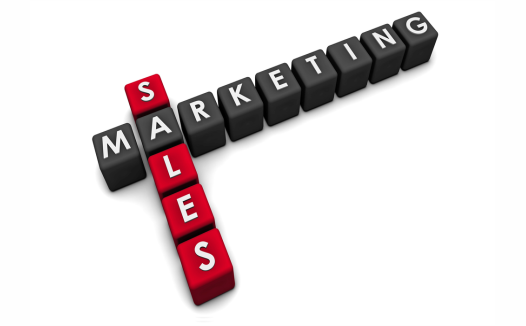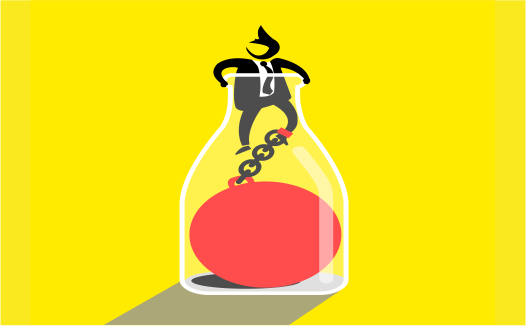Tightening the Lead-to-Deal Cycle with Sales Enablement

The first contact of the buyer with company and product information today is the Internet and, more precisely, the handheld device, which is an all-too-familiar sight anywhere in the world, even in its remotest corner. Gone are the days when the company sales representative would knock on the doors of the buyers and share information about his product, hoping to make a sale, eventually. The internet has taken over the lives of the buyers completely. With the kind of overwhelming information that is available on the internet in a single swipe, there is no wonder that the buyer knows a lot about your product, company, competitor products, the category and almost everything there is to know, from the internet. You may, therefore, ask – “Of what use is our sales representative?” Good question. Your sales representative needs to be well equipped with advanced information that will pre-empt all the prospects’ queries, doubts, concerns at that stage of the buying cycle. A sales representative needs to remember that buyer queries at this stage when he has gobbled up all the information from the internet, tends to be highly advanced, specific and sophisticated. How does one handle this? The answer is two powerful words- Sales Enablement. Brainshark defines Sales Enablement as a “Systematic approach to increasing sales productivity, by supporting reps with the content, training, and analytics they need to have more successful sales conversations.” Sales Enablement demystified For all the glamor or mystery that shrouds sales enablement, it is a simple concept that encompasses all those activities that optimize the effectiveness of the sales effort. Sales enablement is known to increase sales productivity with sales enablement tools. It covers many aspects such as client-facing content; education and analysis; coaching, training, buyer’s insight, content creation, guidelines for using sales assets, sales automation, technology for finding and accessing the right content, and fast and easy access to the right content and knowledge. This helps the salespeople in having all the tools at their beck and call so as to focus on providing value during client discussions. It has been shown in a survey of 400 B2B Sales and Marketing professionals that 57 % ranked their sales efforts and effective or very effective, in organizations that had sales enablement. In another survey, one could see a clear 50% increase in sales team goal attainment. It is all very well to see and say that sales enablement is a must for sales effectiveness and sales acceleration. However, implementing it the right way needs a certain amount of discipline on the organization’s front. This can be applied in three ways: Sales and Marketing working as a Team Too often we see sales and marketing passing the buck on each other. Sales say, marketing does not generate enough leads or generates poor leads, while marketing says, sales wastes the leads given to them. If instead, the two join hands and communicate in unison with the customer, the effort will be fruitful. Marketing can glean and share insights generated through nurture campaigns and digital listening with sales. This way, sales can work on intuitive insights thus leading to better results and conversions with customers. Integrating systems to ensure the end-to-end lead flow With all the talk going on, about lead generation, nurturing and conversion, one cannot afford to ignore the integration of systems so as to leverage the lead to deal process. The smooth flow of leads in the funnel from marketing to sales is important. Marketing should pass on all the insights to sales that are generated during the nurturing process; they need to create a clear customer profile for sales; so that when sales walk in, they pass on the right message, catch the right white space opportunity and move in for closing the deal. Today, this smooth flowing of leads, lead profiling, and customer understanding is critical because sales come in later in the buying cycle than used to happen earlier. The marketing and sales alignment helps the sales organization follow up with the right communication and cut down the duration of the buying cycle. CXO backing Talking about sales enablement and sales transformation is easy, but implementation, not as much. Like any other new tool, technology, process or practice that needs to be incorporated into an organization, even this one needs top-level backing. The support also has to be active; with clear, planned communication, benefits, and schedules from the top, reinforcing the change. Sales and marketing leadership is the best place to begin this shift. A good part of sales enablement is good, impactful content. If sales have to try hard to access it, they lose time. If they do not understand what content the buyer needs in a face to face discussion, they lose the buyer. Sales enablement does not come alone. To go with it, it needs good content and great integration between sales and marketing, in spirit, function, and systems. This will help organizations in upping their customer experience, making a positive difference in conversion rates and improving sales effectiveness and productivity. Explore the complete guide to Cross-selling and Up-selling to identify unexplored opportunities for your business as well as your clients’ business and grow better in 2021.
Behaviours that Enhance Sales Effectiveness

In one of our earlier blogs, we have argued a case where tech alone cannot help in selling and selling well. Selling is an art and a science and weaves together psychology, business learnings, and personal skills. If we are to base our five on science, there has been enough research in the last 5 decades or so, to arrive at some conclusive findings that help in hugely enhancing selling effectiveness. We are primarily going to talk about some specific behaviors, which are easy to follow and practice. You will see a difference and a hike in your sales effectiveness that will prove how effective these behaviors are in selling. 1. Label the prospects: Labeling the prospect is very simple. Here, the salesperson assigns a certain behavior to a prospect and by doing so, sets an expectation of similar behavior from the prospect. In this case, it is not so important what the prospect was thinking earlier. Research has proven that when you label your prospect, he is more likely to behave the way you want him to. For example – If a prospect is being elusive while answering some important questions to the salesperson, and the salesperson labels him by saying – “You are very open you’re your answers and thoughts, thank you!” The chances that the prospect stops being elusive and starts being more open are much more. In fact, going by research, he will be more open. Labeling the prospect is a wonderful thing that can be used in enhancing selling effectiveness. 2. Rebel. React: It is found and proven that prospects rebel when salespeople create a sense of urgency for them to respond. When the above was analyzed, we observed that prospects feel threatened that their personal freedom to decide is being restricted and threatened and the salesperson is taking over their freedom to choose and decide. These create a reactive behavior in a prospect and he rebels without even thinking. This kind of behavior is extremely human and the pushier one gets, the more the other person rebels. Instead, if the salesperson ends by saying to the prospect – “This product will help you improve your quality 3x. But of course, the decision is yours.” There are greater chances the prospect falls into a responsive mood and is more positively inclined to you, rather than saying – “You won’t get a better product than this and since we are running out of our special offer, you must make a decision fast.” The latter statement will put off the prospect for certain. Salespeople should say the right things and ensure they never end up pressuring the prospect. It calls for tremendous patience, but it is a great skill to master. 3. Turn value statements into value questions: Typically, prospects never understand your value statement easily. They take their time. But one easy and scientifically proven way to make them understand your value statement easily would be to convert the value statements into value questions. These questions help amplify the persuasiveness of sales messages because they guide prospects in mentally digesting the value you offer and give them a feeling that it is they, who are going to take the decision. It is simple to create a value question – you need to add a questioning phrase, a short one, to your value statement. Example – “This software would reduce your HR operational costs annually by $200,000, wouldn’t it?” You could even keep a set of value questions ready, based on your key value statements. If all the above sounds simple, it is. But it is proven to produce amazing results. We urge you to try these three selling behaviors to overcome sales effectiveness bottlenecks. Do share with us, your views and experiences. And get ready for a superlative increase in sales enablement, effectiveness and performance. Also, do read our other sales effectiveness blogs.
The #1 Bottleneck in Sales Effectiveness. What is it?

Some of the most common bottlenecks in Sales Effectiveness have been languishing in the Sales Problems folder in our Macs for quite some time now. If you ask any Sales Representative, he will nod his head in approval at us have been able to pinpoint a number of his concern areas. It is important to address each of these concerns one by one. But more important is to prioritize them. This will help us raise the Sales Effectiveness quotient a few notches higher. As it is said, a problem well identified is half done. So, topping the charts of the Sales Effectiveness Bottlenecks is a ‘Dearth of qualified leads.’ Problem #1: Dearth of total leads, which leads to a dearth of qualified leads Solution #1 To address the first, something needs to be done to increase the number of leads. The marketing team needs to focus on getting more leads, ramping up the pipeline by analyzing the current promotion mix, the spends, the spend to media ratio, the spend to lead generation ratio and so on. The team needs to do a thorough analysis on: Is our media mix right? Is our content right? Are we reaching the target audience at the right time in the right place? The analysis will throw up a lot of opportunities for improving the promotion process. This should then sort out the lead generation process for some time. OR Problem #2: Lack of a process that qualifies or disqualifies leads based on their quality. Lack of a Lead Quality Controller or a Lead Qualifier. Solution #2 This problem is more quality-based; it says that the leads that are going to sales from the marketing team are not qualified leads. This is a bigger problem and is disturbing many organizations. The leads may be good in numbers, but when measured for their ‘fit’ to the defined ‘lead’, they drastically fall short. Marketing and Sales are usually caught in a crossfire as to whose mandate this is. To resolve the issue, it is important to plant a person or a small team that acts as a Lead Qualifier. This team or person should go through the leads generated and qualify or disqualify them based on some predefined parameters. This will go a long way in helping the Sales team to save time spent on poor leads and invest time in nurturing the qualified leads, leading them closer to conversion. This will clearly help in boosting Sales Effectiveness for the organization. If you like this blog, do read about our sales transformation blog to drive business growth in 2021.
Sales Operations Demystified – Part 2

In the last blog, we saw how Sales Operations as a function was clearly misunderstood. There we read about the first two points that demystified Sales Operations. In this blog, we will read about the other 2 points that help us in understanding the role that Sales Operations plays in the Sales Organization. Helping in building a high-performance Sales Organization and Working on improving team efficiencies and execution Helping in building a high-performance Sales Organization The Sales Operations needs to work on an organizational structure that works smoothly and effectively as well as efficiently to help the sales team to deliver to its targets. Below is how the Sales Operations can make a difference. Hiring the right people: The kind of people you recruit and allow to walk in through your door can make or break your sales team and their performance. Highly self-motivated people, open-minded learners and star performers can make a world of difference, but morale -breakers can ruin the performance of an existing team too. Sales Operations needs to work with HR on laying down some good hiring practices, using some key evaluation tools to ensure you are hiring the right guys. Allocating Territories: Allocating territories can be a crucial function of Sales Operations. They need to measure the richness of territories for the opportunity, logistically correct allocation, vertical-wise allocation and a number of such permutations and combinations for the best performance. The key is to balance territories for opportunity and impact. Incentive Planning: The backbone of sales is the incentive plans. Sales are driven by incentives, this is their drive, their charge. Sales Operations needs to plan their compensation, incentives, rewards in a way that keeps them secure as well as charged to deliver. The recognition needs to be built-in too and frequencies of such programs need to be planned so as to keep the sales team motivated and positive at all times. Communications: Nothing positive can happen without communication. Sales Operations needs to keep communication flowing in and out – to ensure that the organizations’ best practices, wins, and even challenges are communicated; while ensuring feedback flows in. This helps positive action and results. Team Efficiency and Execution Sales Operations works to ensure that the sales team is spending the maximum time on building the sales portfolio. Certain things need to be taken care of towards achieving this. Inside-Out Communication: Salespeople may often get uneasy or not bothered about communicating externally or internally. They are far too focused on their core job of selling. But communication is an important part of selling and hence the sales operations team needs to look at tools that help the sales team communicate at the right time in the right way to the right people. These could be guidelines, certain templates and more, built to help them across the selling process. Bottlenecks in Processing: Sales Operations need to frequently assess, identify and correct bottlenecks in the sales process. Are the proposals, contracts going out on time, is there a check on them? These bottlenecks once removed, help in meeting the deliveries as promised while helping avoid irate customers and losing sleep and valuable time in pacifying them. Using the CRM: Sales Operations can work on helping the sales team to use the CRM to create value for the prospects. However, what is seen is that the Sales Operations spend a lot of their time in making the sales team comply with the filling in and following other to-dos about the CRM and other procedures. This can be avoided and will only help in smoothening the sales process. Time Management: Automating routine tasks and setting procedures that allow the sales team to focus more on their core area- sales, rather than getting stuck in administrative work is a matter of time management. This is where Sales Operations can help. Tools and Technologies: Sales Operations should be on the lookout for tools and technologies that can help streamline the sales process and help the sales team in managing the sales process better. Sales operations as we have seen in this blog and the earlier blog is a lot more than pure execution. It involves a lot of proactive work, strategizing, planning, as well as bridging the gap between leadership and execution.
Sales Operations Demystified – Part 1

Sales Operations are often misunderstood as that part of the sales functional structure that only focuses on the execution part. Operations as a word inherently seem to exclude strategic thinking. But seen from up close, Sales Operations not only ensures that the sales organization runs smoothly, but also plans for it; it works to see that the sales team delivers, it makes the necessary improvements as and when required and helps in scaling up the entire process smoothly. Sales Operations actually are all of what we just said and maybe even more. As Amanda O’Neill, Director of Sales Operations at AT&T puts it, “Sales Operations describes a cross-functional role that guides customers through introductory training, provides support through the sales lifecycle, and enables long-term account sustainability.” We have broken down the main facets of the Sales Operations role into 4 points, here. Setting the Sales Strategy Working towards creating Sales Excellence Helping in building a high-performance Sales Organization and Working on improving team efficiencies and execution Let’s talk about the first two points of detail and in the ensuing blog, we will talk about the latter two in detail. Setting the Sales Strategy Sales Operations is not just about the ‘doing’ or ‘execution’. It is also the setting of the ‘How to do it’ that we call as ‘strategy’. The setting of the Sales Strategy has some key elements we need to know. Here they are: Working on an effective Go-To-Market Model This model is a product of various functions coming together to zero in on the best model there can be, for that product, market, and organization. Sales Operations as a functional expert is a key player in determining and assessing the go-to-market model. What will be the friction element in the models that are being discussed, how likely will the model work as far as buyer interest is concerned? This data is best sourced from Sales Operations, thanks to their years of experience in sales organization management. Evaluation of Sales Methodologies Sales Operations Team is the team that has actually worked on the execution of the Sales Methodology. So they can play an active role in helping the leadership evaluate various sales methodologies to be adopted, based on their experience in training and compliance. Sales Operations is the function that knows which methodology has better chances of succeeding and what might fail. Analyzing Sales Big Data The Sales Operations team have their fingers on the ground data or field data. This helps them in playing a key role in deciding the structure of sales organization and the go-to-market model. Sales Forecasting The Sales Operations Team can help in Sales Forecasting as they have a good experience in knowing how to use data to predict ‘the targets that can be met’. Every sales organization tries to minimize the gap between the target and the target met; here, the Sales Operations team can play a key role. Working towards creating Sales Excellence In helping create Sales Excellence, the Sales Operations Team plays an important role. Besides helping in implementing sales training programs, the Sales Operations team can help in selecting the right approach so that the training turns into learning, into retention of knowledge and into the application of what has been learned. The Sales Operations team can help in the training of the Sales Team in: Selling Products How to get more information about the products, customer insights and thus convert the information into value for prospects. Selling Methodology How to help the Sales Team to become better at Sales Performance? What are the gaps, the bottlenecks that when removed can help the salespeople in performing better? How can Sales Methodology be adjusted for the best performance? Selling – From the customer perspective To ensure that the sales team adds value to the customer, the sales operations team may be required to help the team with the right information, insights, and training. This helps the sales team to build a reputation for themselves as a’ trusted advisor’ and not a vendor or a seller. Proactive Sales Mentoring Instead of waiting for a problem to crop up, the Sales Operations team can help with assessing areas where support is needed regularly and plan for support in advance. This will help in having a calendar of mentoring that will help in a smooth sales process. Keep an eye on the next two points, so that you know the Sales Operations function, for what it truly is.
Kickstart your Sales Team’s New High in Performance

How equipped is your sales team? What does it have that it can do better at sales? How can it improve its performance on the field? Sales enablement can act as a game changer for your sales team, or rather, the right sales enablement can. Sales enablement, to those not in the know, is a term given to a set of tasks, tools, and processes that help raise the performance of your sales team. In B2B selling, this is the need of the hour. B2B selling is not a linear process, it involves a huge investment in terms of time, patience and resources. Unlike B2C selling, where the selling norms, the rules are pretty set in their ways, B2B selling requires grit and perseverance. Right from creating a strong pipeline to identifying your warm and hot leads, to nurture them to the conversion stage, the process is tedious, to put it simply. If some activities from this process are picked up and put down in an automated module, it only helps the selling process and the sales team. This is what is typically called as sales enablement. While various companies may have different sets of tasks and tools under sales enablement, there are some guiding principles that help the team have the right sales enablement. Listed below are the proven three: Ensure your sales team has a good CRM to work with Step up the quality of the sales team hiring process Change your attitude from short term to long term Good Sales Enablement begins with a good CRM enhancer A good CRM does not alone promise or bring in good sales performance. The CSO must look out for good CRM enhancers which help you mine the data fed in the CRM. A good CRM enhancer typically fetches a higher number of leads, more proposals and quotations dispatched, more conversion from leads and therefore, the highly celebrated target-achievement of the sales team, sometimes even beyond expectations. Most CSOs have to ensure that they leverage their CRM and use the CRM enhancers to enhance their team’s performance. Good salespeople help in Sales Enablement Having good salespeople in your team is an outcome of the right hiring process from targeting to selection as well as the right talent development with respect to clearly identified sales objectives and sales gaps. Not to be missed are the sales remuneration and incentive packages and process improvement, in a reverse order as may befit the organization. Sales mastery is most certainly not the role of one man or woman. In fact, each of the team members of your sales force can develop skill areas in sales enablement based on their interest, experience, gaps in the skill sets and the needs of the company. From the sales team, members may choose to become sales coaches, sales talent hunters, and acquirers, remuneration designers, CRM managers or any other role seen as a good fit. Some team members may choose the overarching mother-role of the sales enabler directing the entire team towards being better sales enabled. With a concerted effort such as the above, the performance of the sales team improves multi-fold. Changing your attitude from short term to long term B2B selling never was and never will be a short-term process judged by the sheer length of the buying cycle it typically entails sales, therefore, has to be looked at as a long-term investment, enablement, and improvement. Buyer profiling should not be restricted to online personas but should be made real through a face-to-face interaction between the salesperson and the buyer. This will aid the buyer data that is fed into the CRM, match the real buyer closely, which will help the sales team in its process from targeting to conversion. Sales enablement and sales transformation will pervade the entire sales process from the content function to the channel function to the demand function. The sooner we realize this and start taking action the better. Explore the complete guide to Cross-selling and Up-selling to identify unexplored opportunities for your business as well as your clients’ business and grow better in 2021.
Why You Should Watch Out for Sales Enablement?

Companies are increasingly understanding the importance of implementing marketing and sales technologies to their functions in order to increase efficiencies and drive growth. Sales enablement is one function that has received increasing acceptance across firms to help sales teams do their jobs better. As a huge chunk of marketing and sales budgets can go into replacing B2B sales representatives, and several months are spent in training new recruits, companies are instead increasingly looking to invest in technology solutions for these teams. However, the extent of adoption differs from one company to another. Companies are generally classified into two sets when it comes to sales enablement. The first set of companies which have made significant and mature investments in the sales enablement function have already experimented with several kinds of solutions. These firms will now look to consolidate their existing basket of tools. In companies where sales enablement is in full swing, it is likely that mature investments have already been made in ramping up the sales and marketing IT infrastructure. Their existing technology bouquet would likely boast of a CRM solution, a marketing automation system, and tools well-suited to their business. These companies also would have senior executives focused on Business Intelligence, Big Data, and Analytics. On the other hand, organizations which have recently come to realize the importance of CRM are yet to entirely expose themselves to sales enablement and sales transformation. They are now focusing on broadening their understanding of the CRM ecosystem, including more tools and obtaining SaaS solutions to enhance their existing marketing and sales technologies. Companies with nascent investments in sales and marketing technologies are likely to spend more time on strategizing. Their primary objective is zeroing in on a solution that helps the sales team save time. The solutions they adopt generally include CPQ, content delivery, proposal automation, and mobile applications, among others. They are generally on the lookout for a scalable platform which can help them with strong analytics. Either situation calls for heavy contribution from an investment into Big Data. According to Aberdeen Group, more than half of the best-in-class firms find it useful to implement analytics to sales data such as past activity and current pipeline. While the general trend points towards an increase in marketing budgets over the next few years, with the sheer range of tools available, the C-suite is expected to be pickier while expanding their technology bouquet. CMOs and CIOs will strive to obtain a more holistic view of the various stages of the project lifecycle, from generating leads to closures. The coming years will only heighten the importance of a more closely-knit relationship between sales and marketing teams, as companies look to consolidate their investments, especially related to SaaS. Having said that, despite the selective investments surrounding SaaS, companies will be willing to make valuable additions to their technology systems. The coming times can be challenging for those who companies who do not fall into either category. The key is to open up to the idea that initial and additional investments in SaaS will be a given, but will prove to be valuable in the long term if they are aligned with the company’s plans and objectives. Explore the complete guide to Cross-selling and Up-selling to identify unexplored opportunities for your business as well as your clients’ business and grow better in 2021.
What is Sales Mastery? Is it the same as Sales Enablement?

Sales Mastery vs Sales Enablement What is Sales Mastery? Sales Mastery is more often than not construed as ‘building a good relationship’. Period. Nothing can be further from the truth. A good sales job is not just about building a good relationship with the prospect or customer, but about sales mastery. Today, sales is more about value selling than anything else. If you are able to convince the prospect that you have value on offer, he is more likely to bite, read buy. Buying, after all, is all about selling value. Sales mastery is about 3 things: Being a domain expert Creating perceived and real value for customers Tapping technology to its fullest to build in efficiencies and effectiveness Being a domain expert All of this takes a lot of hard work and burning the midnight oil if you may. Being a domain expert means you are using most of your spare time and non-working hours in catching up on the domain/industry that you are selling to. This is digging into your own time for research and learning. Only if you know more about the domain of your customer, will you be able to speak, persuade, sell with conviction. Conviction and leadership come with knowledge Talk about how you can add value to his business Talk about numbers, because business, whether you like it or not, is about numbers. Tell your prospects what difference you can make to their business numbers, how it will benefit their business, in how much time and what cost. Talk about the risks and how they are managed, talk about case studies – your best case studies of the past and how they benefitted you. Talk technology Technology needs to be leveraged in order to maximize its potential. In the modern world, data is assuming not just importance but criticality. This data can be used fully to work for sales. The data that is collected can be analyzed to glean a huge amount of valuable information which can go a long way in winning not just sales, but also your customers. Moreover, the customer will know and perhaps appreciate that you have done your homework before you met him. Sales Mastery is about an individual, but sales enablement is about how the organization works to make the individual salesperson work on his sales pitch. It is about using the CRM to work with the marketing team in lead nurturing. It is about a lot of things that we will see below in short. What is Sales Enablement? Sales enablement is a set of tools, techniques, processes, and technology that ‘enable the salesperson’ and the organization’s sales force to make the most of their sales skill sets and move from being good to being great. It is the stepping in of the organization and the stepping up of the areas which will help take the salesperson on the growth path in the value chain and the buyer derive more value at every sales point. Sales enablement is a support system that stands rock solid behind the sales person to deliver efficiencies and effectiveness with the right framework. This framework is chiefly about the sales methodology, process, and technology. This framework is centered around how, by using these three, your sales team can thrive. More in detail, in our forthcoming blogs.
In Complex B2B Selling, Sales Enablement Makes A Huge Difference.

What are the critical elements of sales enablement? They are the sales procedure or methodology, sales process or execution, and technology deployed for reinforcing the process and methodology. Sales Procedure: This is the overall framework, the combination of the way ahead, a larger roadmap, how to do it and, the decisive actions that need to be taken to ensure we go with the big picture. It covers competition analysis and strategy, risk assessment, relationship mapping with key influencers highlighted, and how you leverage them and position how you will deliver value that is seen as ‘value’ by your buyer. There are various procedures and methodologies available, such as Miller Heiman and TAS, but it is more important how you use the one you select for training the team, than which one you select. Sales Process and Execution: In Sales Enablement, this part is the one that needs a lot of detail. It begins with creating the right sales funnel and ends at the execution of the sale. It is about qualifying leads based on deep discovery, working on the right proposals, demo selling, closing (this is critical and often neglected), getting into a contract, starting work, reviewing, and so on. The process needs the right account planning templates, which are tried and tested and proven, yet are flexible to changes – a tool for qualifying inquiries/leads, questionnaires for discovery, proposal templates, review forms, planning templates, call planning, and scheduling calendars and schedules and account plan templates. Technology: It is the technology platform to be used for automating your planning and delivery, and other parts of the process. It is a combination of the standard inquiry and delivery platform as well as the Key Salesforce Account Planning, which needs more than a CRM. What is of the essence here is a single window, a single platform that enables your sales force including your Key Account Managers to have a bird’s eye view as well as a hawk’s eye on the normal and critical movements in the accounts. A platform that is more than a CRM is essential, one which helps you map the relationships along with the pipeline and forecasting that a CRM affords. Sales transformation and Sales enablement are about having a tech platform that places the customer at the center of all your sales and account management efforts, procedures, practices, and delivery. To mastermind all of this, an organization cannot forget good sales management and sales leadership. Explore our blog on cross-selling and up-selling in which we’ve elaborated how it can be used to grow business in 2021.
How to Effectively Drive Prospect Engagement

You may have a strategy to make a sale, but what about the period after the sale? Keeping clients engaged after a sale is made is equally important as it is the window to future opportunities. Engaging with prospective customers assumes another level of significance as they are half convinced and might need a slight push to bring them on to your side. Driving this engagement demands the creation of a winning strategy that requires careful planning and execution. Here are a few tips that can help you drive engagement and help nurture your leads: Form a bond It always helps to form a bond with prospective customers to get an insight into their thinking. Be transparent about the information prospects seek, as they will then find it easy to establish faith and confidence in your business. Try and thoroughly understand their needs and expectations. Then highlight the features of your product or service and tell them how it will be beneficial in solving their problem. Once you have made them comfortable and familiar with your business, making the sale will be relatively easy. Think long term Making a sale is not considered a short-term goal anymore. It extends beyond forming a long-term relationship where clients look to you for effective and quick after-sales services. By showing that you care even about a sale is made, clients will likely return to you for their next requirement or recommend you to their contacts. Nurturing leads should thus be a top priority in your strategy that should not be compromised at any cost. Get the questions right Asking the right questions will not only help you devise a successful strategy but also go to show your prospects that you have done your homework and are serious about your offerings. Garnering details about their budget, objectives, challenges, and goals will help you recommend a well-suited solution for them. That way, you stand a chance to not just meet but exceed expectations. However, avoid questions that make prospects uncomfortable, or make them question your credibility and capabilities. Avoid language that sounds manipulative or high-handed. Devise a successful strategy You need to keep your prospects engaged at all costs. This can be achieved by devising a sales effectiveness strategy that focuses on establishing credibility, showcasing thought leadership traits, and displaying where you score over competitors. However, it is important to avoid sounding pompous. Highlight how a client stands to gain from your products and services and back it up with some case studies or testimonials of satisfied clients. Also, always show your prospects that you are open to feedback at any stage. Ensure that communication lines are always open and that emails and queries through other channels are addressed at the earliest. In account-based selling such as this, making the sale is does not complete the job. Keeping engagement alive with clients and even with prospective clients, as they demonstrate the intent of positive action in the future becomes essential. Always remember to nurture the lead as this helps form a lasting bond that could translate to bigger rewards in the future.


